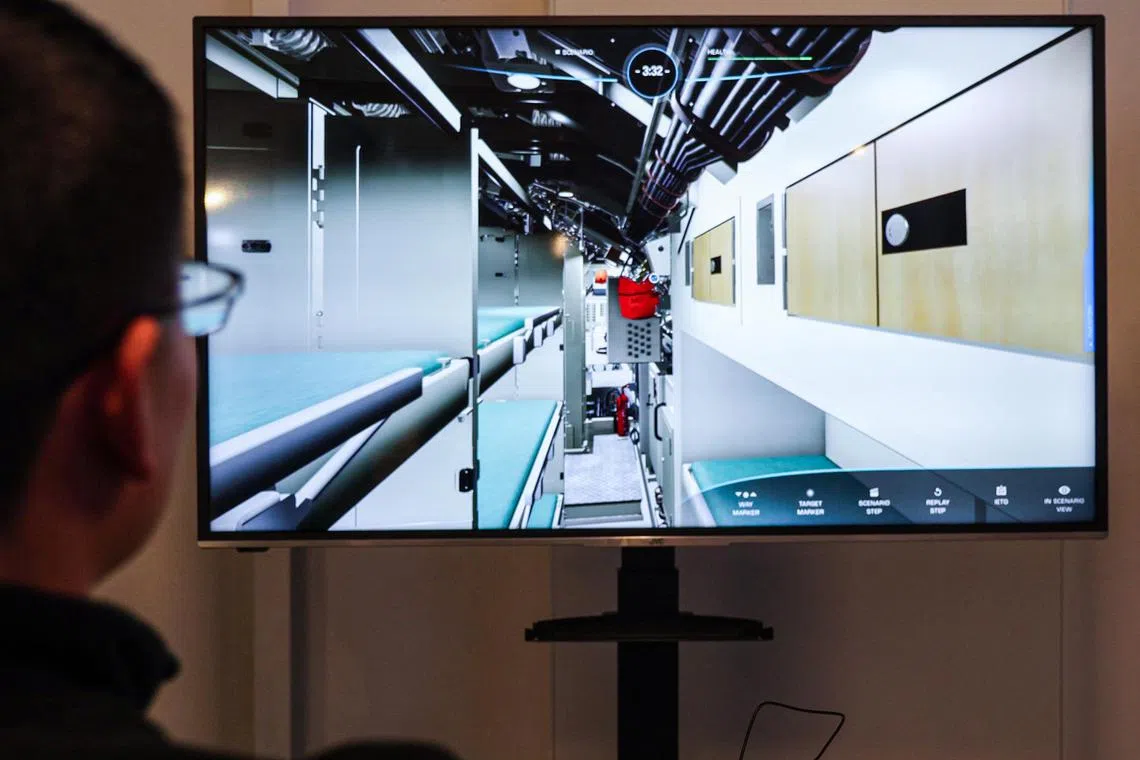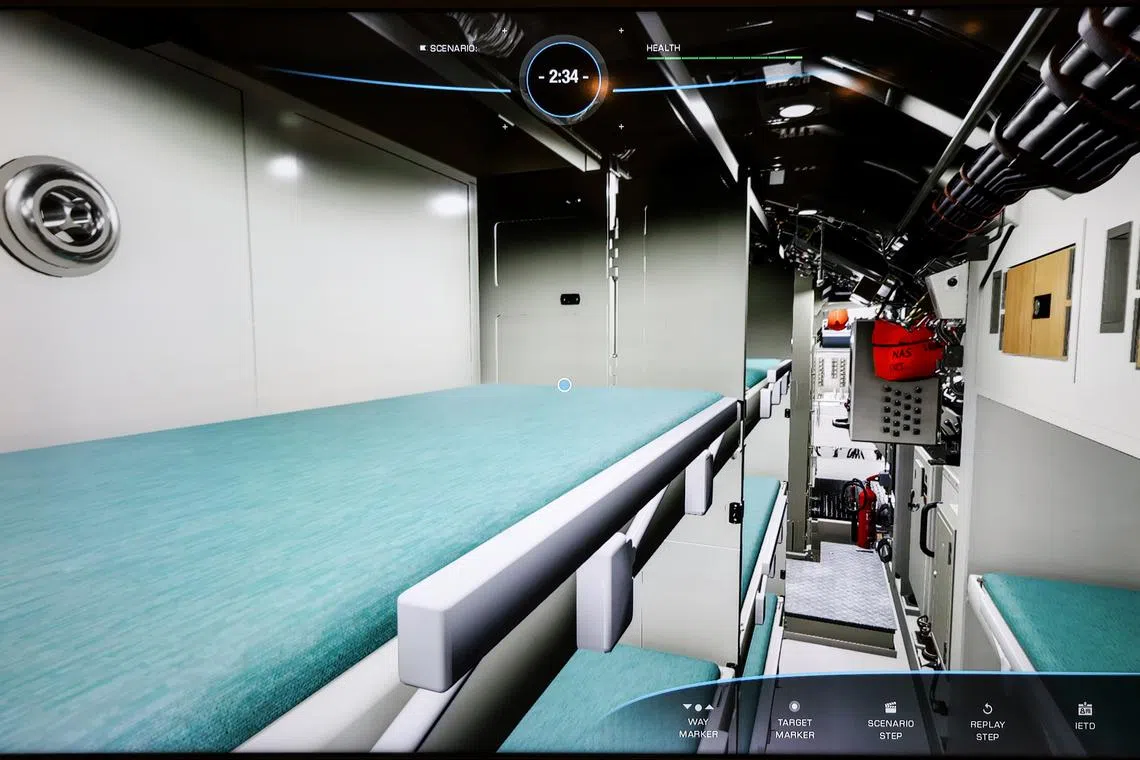Virtual tool to allow S’pore submarine crew to practise manoeuvres too risky to do in real life
Sign up now: Get ST's newsletters delivered to your inbox

The virtual procedural trainer allows submariners to familiarise themselves with the structure and layout of the submarines.
PHOTO: LIANHE ZAOBAO
Follow topic:
KIEL, Germany - Singapore’s order of four German-made Invincible-class submarines
The “virtual twin” models the behaviour of the submarine when a system or equipment is operated, enabling crew members to practise their responses to emergency scenarios that might be rare or risky, apart from allowing them to familiarise themselves with the systems on board.
The Republic of Singapore Navy (RSN) gave the media a demonstration of the virtual procedural trainer (VPT) on Sunday, ahead of the launch of the second and third Type 218SG submarines – the Impeccable and the Illustrious – on Tuesday.
For instance, an operator can practise performing a snorkelling manoeuvre, which allows the diesel-electric submarine to charge its batteries, said Colonel Fong Chi Onn, commander of the 7th Flotilla.
This is done by keeping close to the surface and raising a mast to draw in air. The mast has a flap that will close automatically when it detects water entering. But if that fails, the operator will need to quickly shut an inner valve manually – a process which he can practise in the VPT.
Another aim of using the virtual training platform, which is under development, is to reduce the time that the submarines are used for training purposes, so that the boats can focus more on missions and other operational tasks, added Col Fong.
The RSN’s older submarines have limited space, and a high trainee-to-instructor ratio means that trainees have to wait before lessons can be conducted on board.
Developed by the Type 218SG’s manufacturer thyssenkrupp Marine Systems (TKMS), the Defence Science and Technology Agency (DSTA) and the RSN, the VPT is part of a Type 218SG trainer suite that is expected to be operational in 2024 at Changi Naval Base.
The suite comprises four systems, including two that are similar to what is being used to train crew for the RSN’s current submarines – a combat team trainer and a steering and diving trainer. A maintenance trainer provides hands-on training in critical equipment maintenance.
The RSN also showcased numerous other upgrades to the Type 218SG from the current Challenger- and Archer-class submarines, which were built from the late 1960s to the early 1980s.
This includes a bunk with an en-suite toilet and shower for female crew.
The galley, or the cooking area, has two rice cookers and an oven, among other things.
There are enough bunks for each of the crew of 28, with spare beds for attached training personnel. This is unlike the RSN’s current submarines where bunk-sharing is practised.
Ms Jovin Foo Yee Lin, a senior engineer with DSTA’s Naval Systems Programme Centre, said the Type 218SG uses data analytics to help the crew with decision-making, such as to avoid collisions.

A screen demonstration of the virtual procedural trainer co-designed by the RSN, DSTA and TKMS.
PHOTO: LIANHE ZAOBAO
For instance, the system on board takes in information such as the speed of an oncoming vessel and the submarine’s own speed to calculate the closest point of approach, and recommends evasive manoeuvres if needed, she said.
She has worked on the Type 218SG project for more than three years, including a year and a half in Kiel to ensure the submarines meet performance specifications.
“It is meaningful to see years of submarine experience and operations being incorporated into a new fleet of submarines designed and built for the RSN’s specific needs and operational landscape.”

